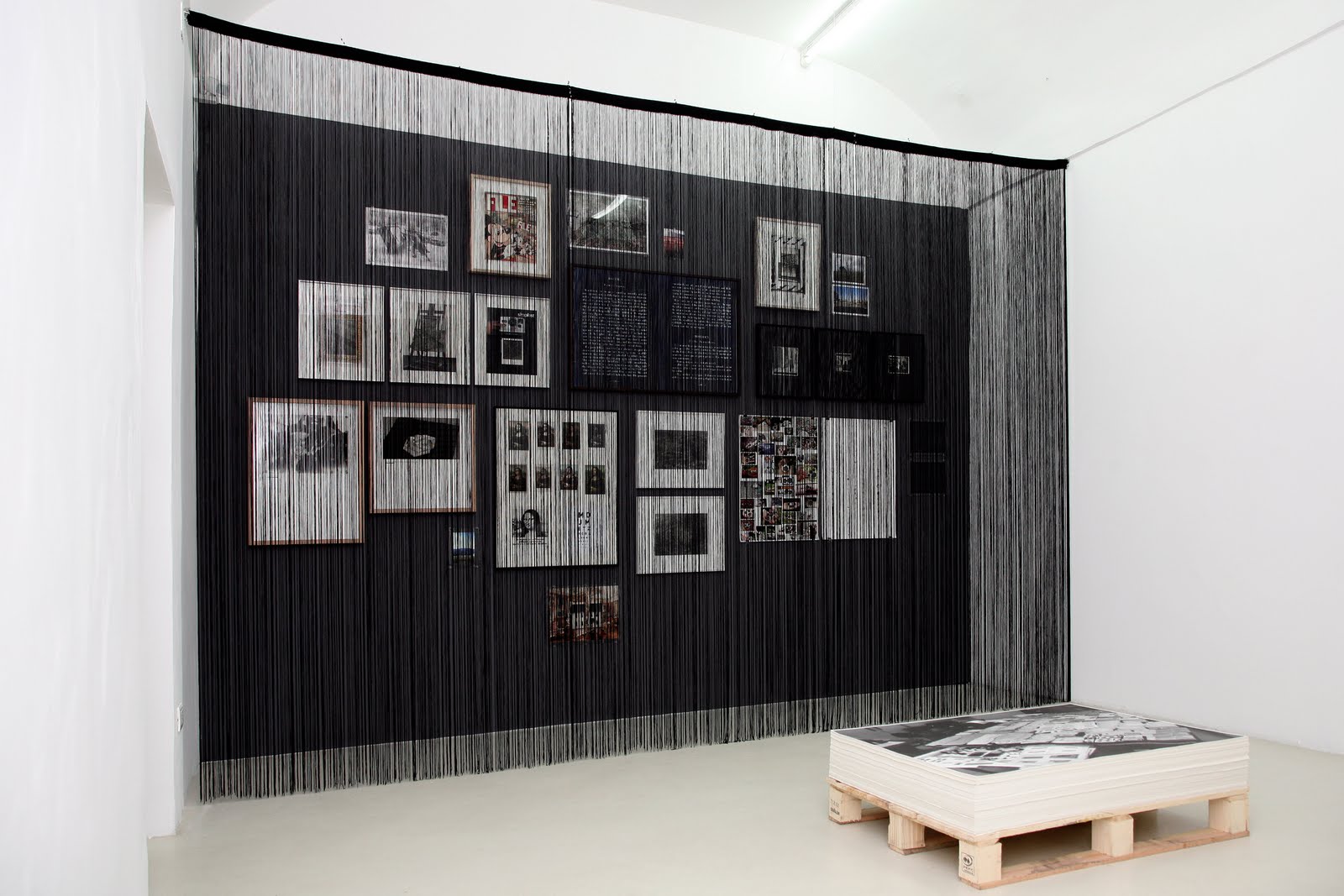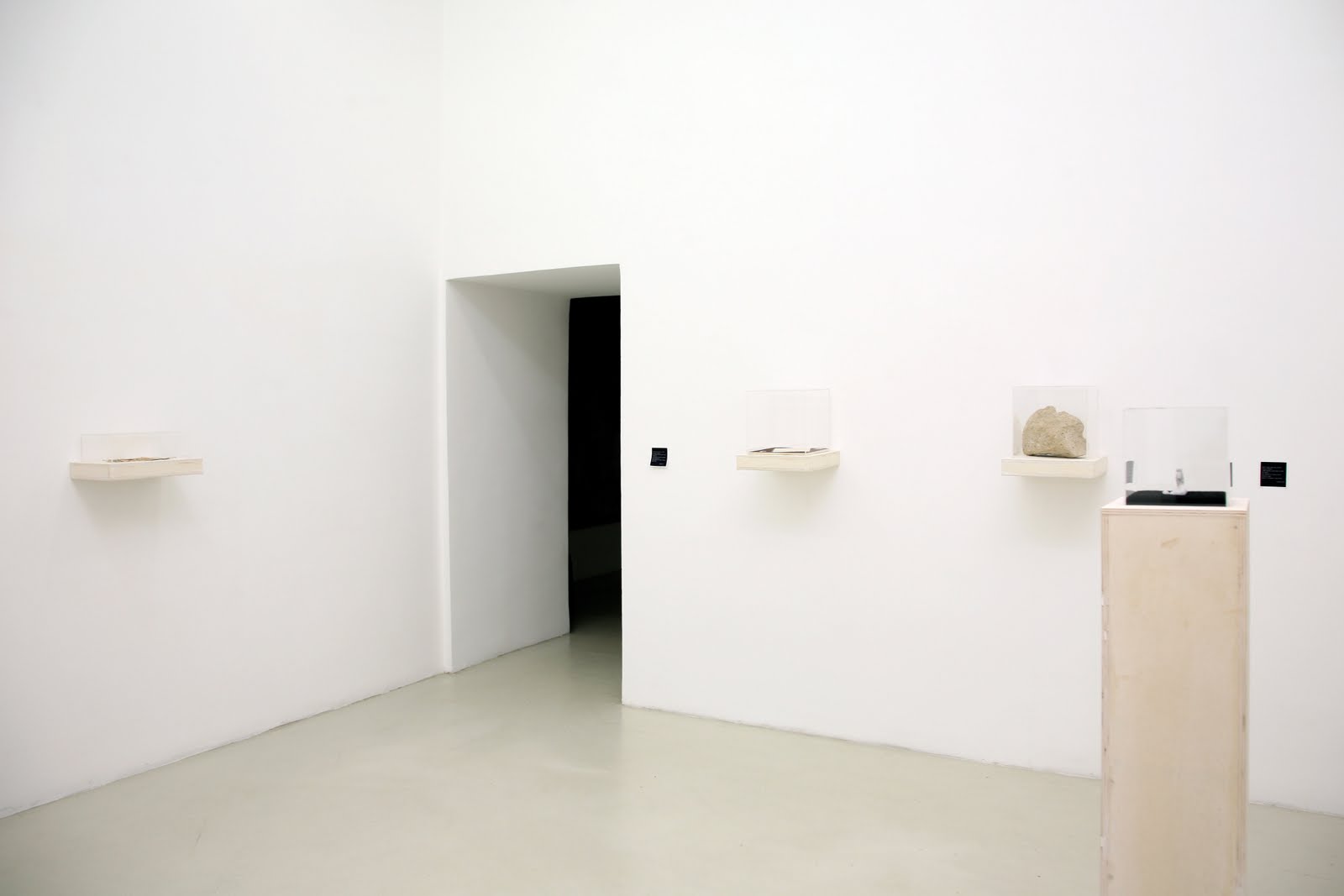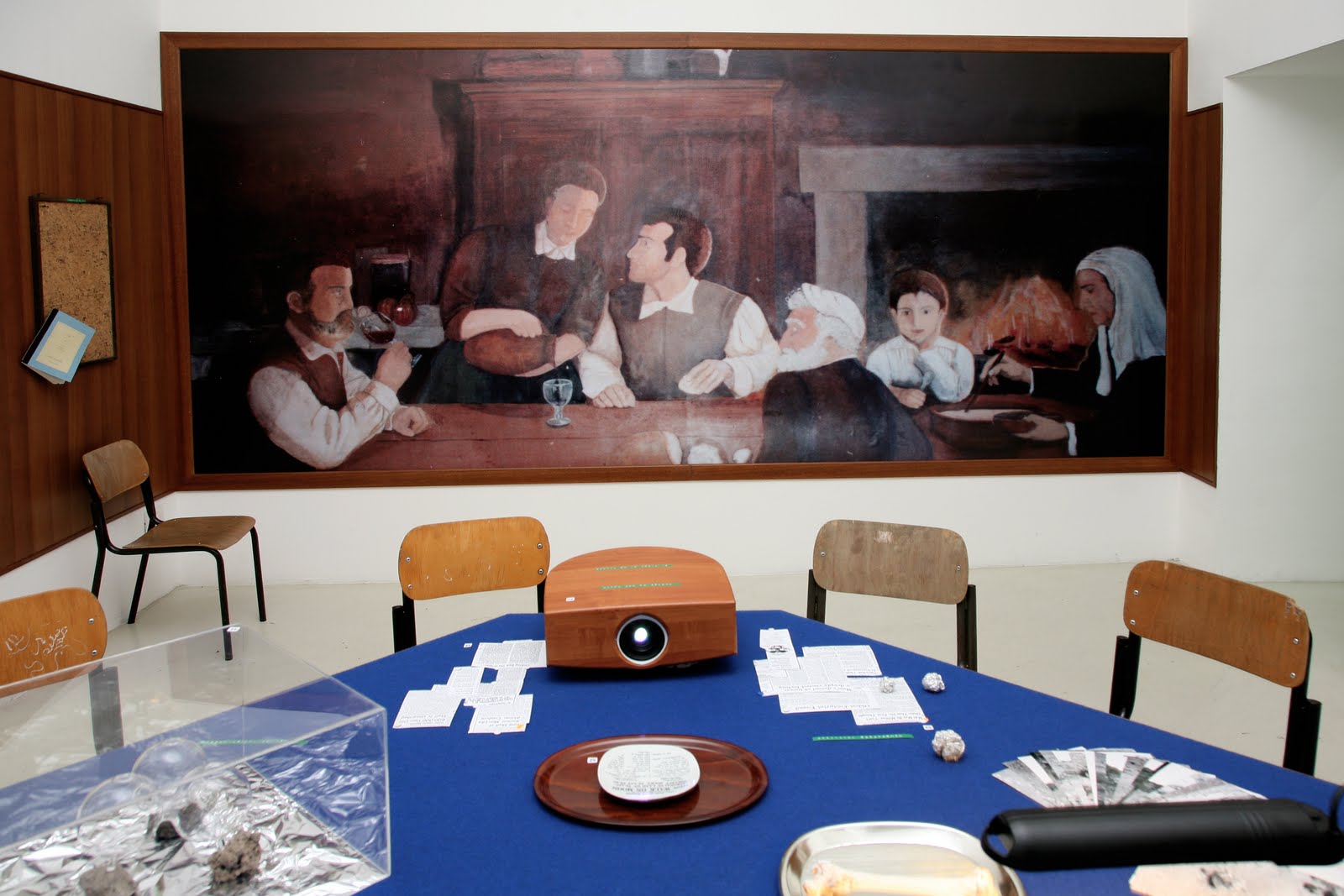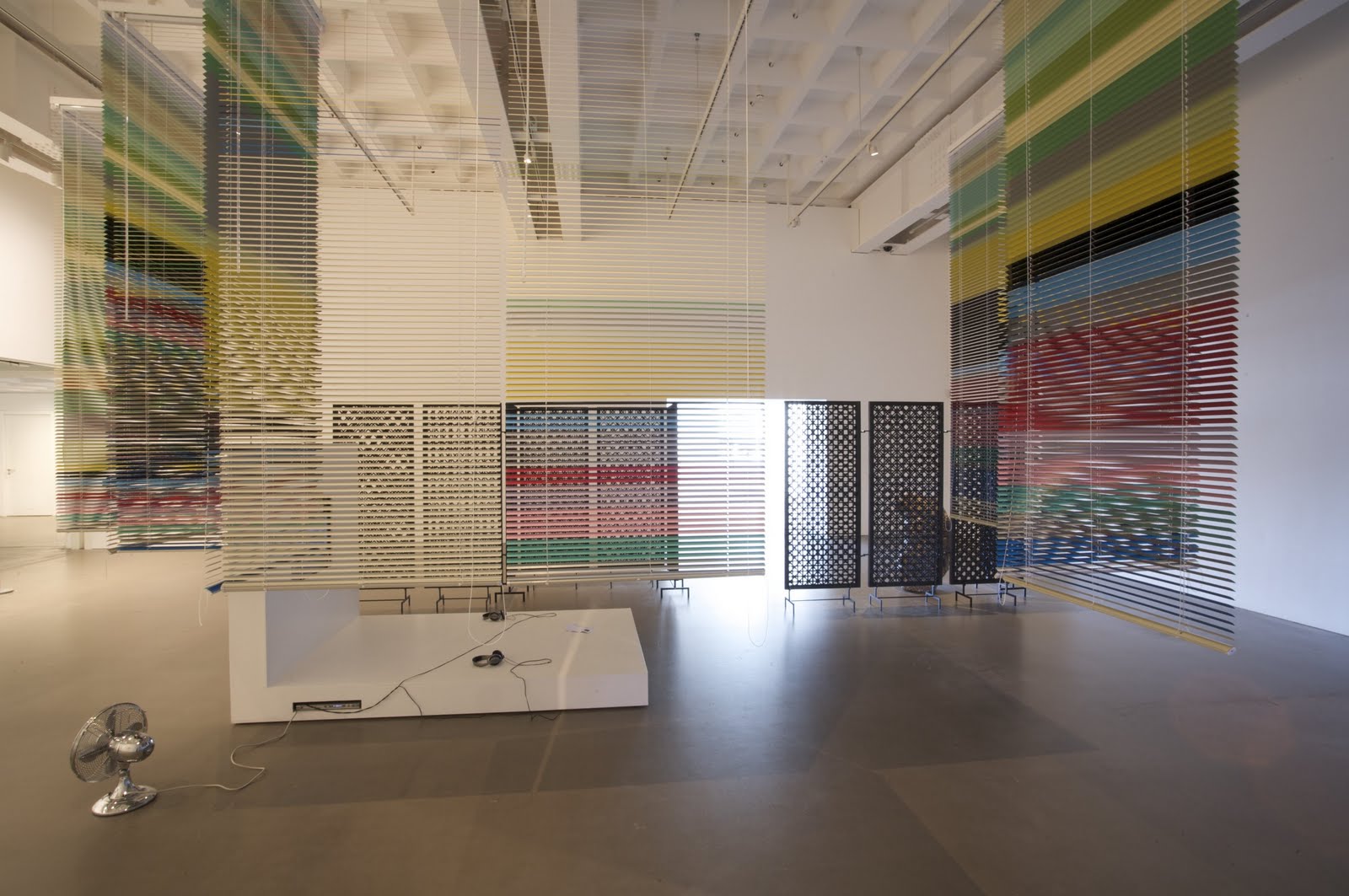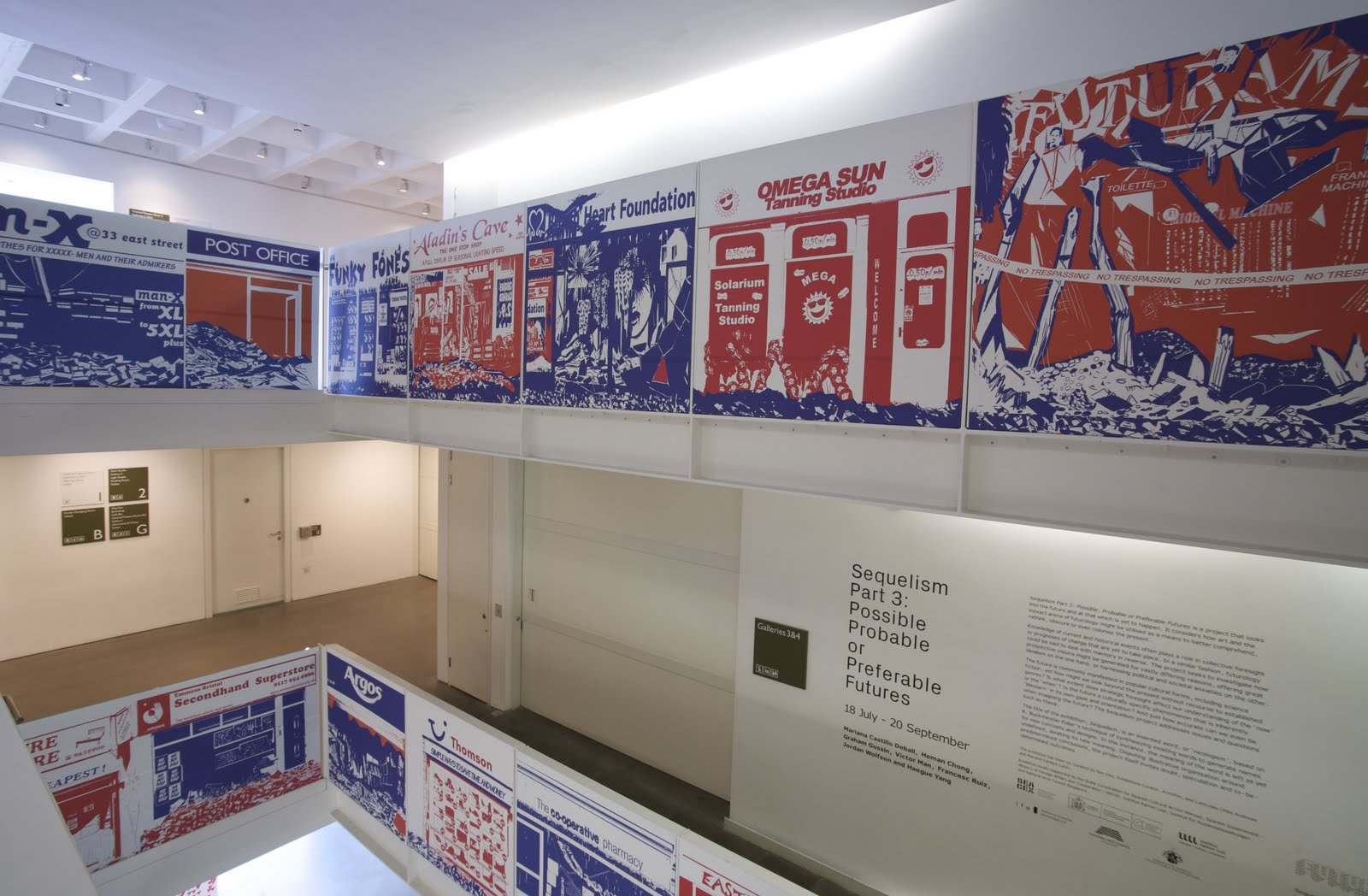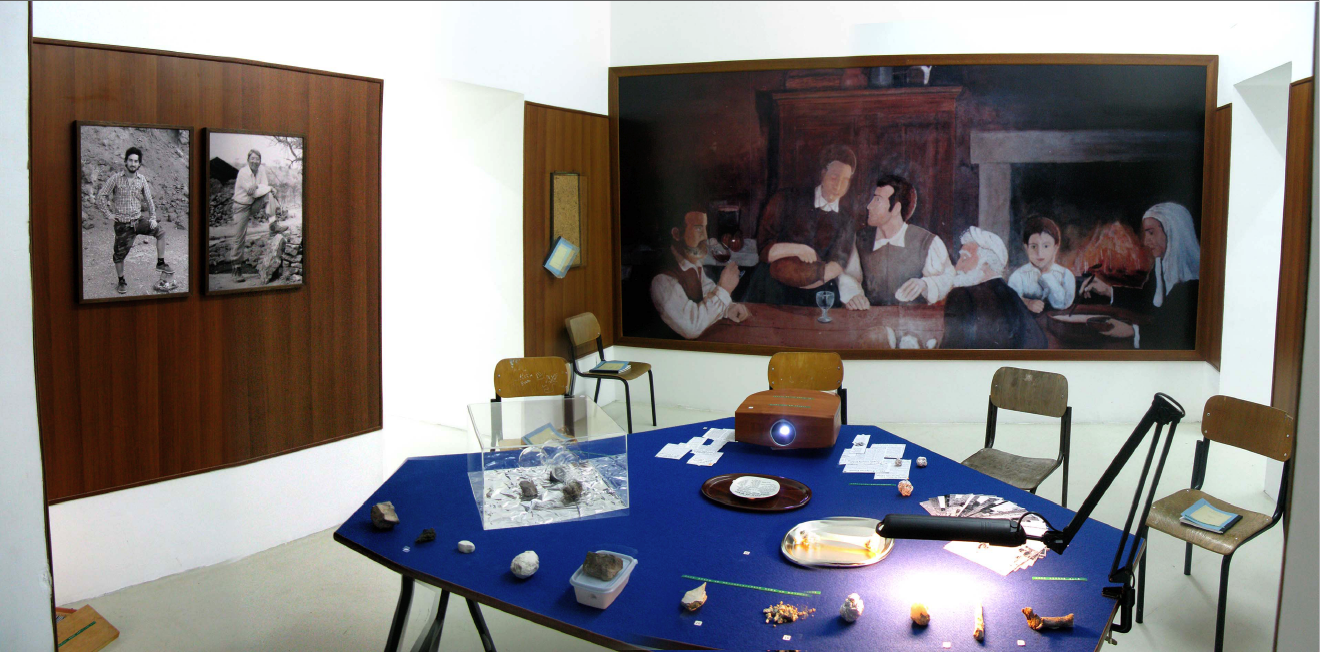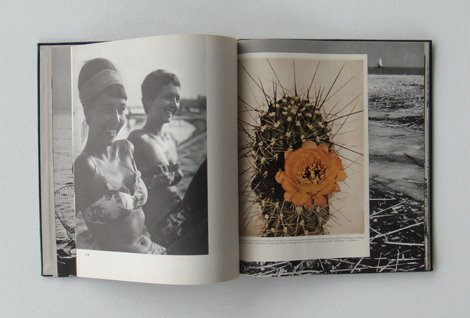Cover Story, September 2022: The means of print production: Erick Beltrán and lumbung press
Thu, Sep 1 2022The September 2022 monthly Cover Story “The means of print production: Erick Beltrán and lumbung press” is now up on our homepage.
“One of the most consequential and ambitious initiatives at the sprawling and polyphonic documenta fifteen is lumbung press, one of several working groups conceived by the artistic directors ruangrupa that transverses the many invited artists, community-oriented collectives, organisations and institutions brought together in Kassel.”
→ After September 2022 this story will be archived here.
Cover Stories are published on a monthly basis on Latitudes’ homepage featuring past, present or forthcoming projects, research, texts, artworks, exhibitions, films, objects or field trips related to our curatorial projects and activities.
- Archive of Monthly Cover Stories
- Cover Story, July–August 2022: Incidents (of Travel) from Seoul, 1 Jul 2022
- Cover Story, June 2022: Cyber-Eco-Feminist Incidents in Attica, 1 June 2022
- Cover Story, May 2022: Things Things Say in print, 2 May 2022
- Cover Story, April 2022: Mix and Match. Laia Estruch at PUBLICS, 1 April 2022
- Cover Story, March 2022: The passion of Gabriel Ventura, 1 March 2022
- Cover Story, February 2022: Rosa Tharrats’ Textile Alchemy, 1 Feb 2022
- Cover Story, January 2022: Rasmus’ Doubts, 2 Jan 2022
- Cover Story, December 2021: Between Meier and Meller: Toni and Pau at the Teatre Arnau, 1 Dec 2021
- Cover Story, November 2021: Notes for an Eye Fire, 2 Nov 2021
- Cover Story, October 2021: Fear and Loathing in Lebanon, 1 Oct 2021
- Cover Story, September 2021: Erratic behaviour—Latitudes in conversation with Jorge Satorre, 31 August 2021
Interview with Erick Beltrán & Jorge Satorre published in 'Atlántica' magazine #52
Mon, Feb 13 2012Jorge Satorre (JS): At the core of Modelling Standard is our interest in the methodology proposed by Italian microhistory during the seventies as well as its precedents. Specifically, the essay of Carlo Ginzburg ‘Clues: Roots of an Evidential Paradigm’, which was published in 1979, functioned as one of the main pillars of our project. In the text, he tried to explain a new way of making history in which there are three basic methods to follow: first, reducing scale; second, in-depth investigations of the few sources at hand; and third, exploitation of hints and traces – working like a detective. [2] Ginzburg supported his theory by alluding to the fathers of this paradigm: Sigmund Freud, Arthur Conan Doyle, and Giovanni Morelli. These three people worked in very different fields, though they shared a medical background and operated in the manner of a detective: deciphering clues through symptoms and finding hidden meaning in details. From this trigger, Erick and I started opening up a web of relations.
L: It is now a fascinatingly complex project which involves a whole host of characters and has evolved through an exhibition at FormContent in London in 2010 and a comic book that you produced for Casa Vecina in Mexico City earlier this year. Integral to the project are the amazing drawings of Jorge Aviña, who we’ll come onto specifically in a moment, which you commissioned as illustrations of certain concepts. But as Charles Fort said, ‘one measures a circle, beginning anywhere’... so, let’s pick one drawing and one character – Vilayanur Ramachandran?
 |
| Erick Beltrán and Dr. Vilayanur Ramachandran. Courtesy the artist. |
 |
| Jorge
Satorre and Erick Beltrán (Illustrations
by Jorge Aviña), “Modelling
Standard”, 2010. 58 photocopies pasted on the wall. Variable dimensions. Courtesy of the artists. |
–
'Nice to Meet You – Erick Beltrán. Some Fundamental Postulates' by Max Andrews on Mousse Magazine #31
Wed, Nov 30 2011 2011, Erick Beltrán, interview, Max Andrews, Mousse magazineErick Beltrán and Jorge Satorre's 'Modelling Standard' evolving project and forthcoming interview with the artists for 'Atlántica' magazine
Tue, Nov 15 2011Opening: 17 November 2011, 19.30h (the artist will do a talk at 20h)
Exhibition organised by: Jorge Satorre and Erick Beltrán
With works by: Christoph Keller, Raphaël Zarka, Paloma Polo, Bernardo Ortiz,
Efrén Álvarez, Meris Angioletti, Jose Antonio Vega Macotela, Vilayanur Ramachandran,
Jorge Aviña and Florian Göttke.
The presentation at Galeria Joan Prats is the third iteration of the project which began in September 2010 at FormContent, London and continued in March 2011 at Casa Vecina, México DF.
"Modelling Standard takes as a point of departure the radical historiographic turn introduced by Carlo Ginzburg in the 1970s who focused on localised, popular and disregarded micro-histories rather than universal, over-arching versions. The title Modelling Standard references the scientific concept of the Standard Model used in physics to explain the almost invisible interactions occurring between subatomic particles.
'Banquete sinestésico' de Erick Beltrán en Halfhouse
Sun, Oct 30 2011
This work is licensed under a Creative Commons Attribution-NonCommercial-NoDerivs 3.0 Unported License.
LAST CHANCE: 'Provenances', Umberto di Marino, Naples & 'Sequelism Part 3: Possible, Probable or Preferable Futures', Arnolfini, Bristol, UK
Mon, Sep 7 2009Installation view of Erick Beltrán's works: 'Euridice' (ink on gold leaf on oak leaves, text on paper); 'Creusa' (ash from Vesuvius, text on paper); 'Sybil of Cumea' (inscribed tufo stone, text on paper); 'Ildeth' (carved salt from Spiral Jetty, text on paper). All works from 2009. Photo: Danilo Donzelli.
'Provenances'
Erick Beltrán, Jordi Mitjà and Simon Fujiwara
Umberto di Marino Arte Contemporanea, Naples, Italy
until 14 September 2009
Opening hours: Mon-Sat 15–20h
Arnolfini, Bristol, United Kingdom
until 20 September 2009
Free admission
Opens: 10am-6pm Tues-Sun & Bank Holiday Mondays. Closed Mondays. Free entrance
Slideshows of two projects: 'Provenances' at Umberto di Marino and 'Nothing, or Something' at SUITCASE Art Projects Beijing
Mon, May 25 2009We have updated our web and uploaded images of two recent projects: 'Provenances' an exhibition at Umberto di Marino, Naples, and 'Nothing or Something', SUITCASE Art Projects, Beijing:
'Provenances' [PHOTO GALLERY] opened on May 14th at Umberto di Marino, Naples, and is composed of three specially-commissioned solo presentations by Erick Beltrán, Simon Fujiwara and Jordi Mitjà. The exhibition reflects on the heritage industry and the museumification of history, as well as the creation, transmission and fidelity of cultural worth. On view until 14 September. + info
UMBERTO DI MARINO
Opening hours: Mon-Sat 15–20h
Ignasi Aballí's new project [photo gallery here] for the eight windows of SUITCASE Art Projects responds to the retail context of the Yintai Centre as well as an artistic history of absence, nothingness and invisibility. + info
Suitcase Art Projects,
Please join us on Thursday 28th May 20h, at the opening of 'The Garden of Forking Paths', a group exhibition at Maisterravalbuena, Madrid. The exhibition brings together the work of Eric Bell & Kristoffer Frick; The Infinite Library (Daniel Gustav Cramer & Haris Epaminonda); huber.huber; Leslie Hewitt & Matt Keegan and Nashashibi/Skaer, five artist-duos to consider duality, simultaneity, saturation and proliferation. On view until 18 July 2009. + info
MAISTERRAVALBUENA
Opening: Mon-Fri 10-14;15.30-19.30; Sat 10-18pm
[Photos: Simon Fujiwara, 'The Museum of Incest', installation at 'Provenances', Courtesy of teh artist. Photo: Simon Fujiwara; Visitors seeing 'Scenic Views' by Ignasi Aballí and Daniel Gustav Gramer & Haris Epaminonda 'Book #7: Walther Haage, 'Das praktische Kakteenbuch in Farben', Neumann Verlag, Radebeul, 1966 & Tibor Déry, 'Der Balaton', Druckerei Kosuth, Budapest, 1968' Courtesy the artists. Below: huber.huber, 'Mikrouniversum und andere kleine Systeme IV', 2009. Courtesy the artists.]


























